Broad-based program of research into Hungarian art of the 1960s and 1970s
Since autumn 2014, Kassák Museum director Edit Sasvári has been leading a group of researchers in the Museum. The group’s objective is to make a comprehensive study of Hungarian visual art in the 1960s and 1970s.
Members of the researc group and their research areas: Edit Sasvári
Edit Sasvári
"We propose a new conception that focuses on the regional context, replacing both the isolated nationalist view and the centre-periphery dichotomy. The fundamental determinant of this context is the delicate position occupied by the countries of the region, squeezed between the two superpowers. This is the starting point for an attempt to rethink the present constellation. The main virtue asserted for the model is that it gives expression to the special cultural patterns of the region instead of invoking the ossified cold-war narrative of superpower confrontation. The key concept here is the “doublespeak” engendered in all of the countries in the region by the vice-like pressure of the two superpowers, eclipsing geographic, linguistic and political differences."
Edit Sasvári is an art historian, and has been Director of the PIM Kassák Múzeum in Budapest since 2010. She has degrees in Hungarian Language and Literature and History from Janus Pannonius University, Pécs (1985) and in History of Art from Eötvös Loránd University, Budapest (1996). She studied museum curator studies in the Institut für Kulturwissenschaft, Vienna (IKW) (1994-96). In 2016, she will complete her PhD in the Interdisciplinary Doctoral School of the Department of Modern History, University of Pécs. The topic of her thesis is art and the cultural policy in the 1960s. She has been working in the museum field since 1988, and her main areas of research are historical modernism, the (neo)avant-garde, and art-related cultural policy in the 1960s and 1970s.
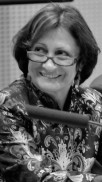 Edit András
Edit András
The central tenet of scholarship “personal is political”, generated by Western feminist activity in the 60’s and 70’s, is based on the recognition that many of the personal problems women experience in their lives are the result of systematic oppression and massive structural inequalities. However, in regard to existing Socialism the slogan is useless, and instead the exact opposite is relevant; “the political is personal“ which precept will be analysed in her essay entitled Behind the Iron Curtain the political is personal, through the art of Orshi Drozdik, Dóra Maurer, Katalin Ladik, Sanja Ivekovic and Zsuzsa Szenes.
Edit András is a Hungarian art historian and critic. She lives in Budapest and in Long Island, NY. She has been affiliated with the Institute of Art History, Research Centre for the Humanities of the Hungarian Academy of Sciences (Budapest) as a senior research fellow. She holds a PhD in art history from Eötvös Loránd University, Budapest. Her main interest concerns Eastern and Central European art, gender issues, socially engaged art, public art, critical theories, post-Socialist condition and nationalism in the region. She has participated in several international conferencences and workshops as invited speaker and published numerous essays in collected volumes, catalogues and professional journals, including Artmargins, e-flux, Idea, Third text, springerin. She authored the book Cultural Crossdressing, Art on the ruins of Socialism, (Budapest, 2009) and edited the anthology Transitland. Video Art from Central and Eastern Europe 1989-2009 (Budapest, 2009). She was the curator of the Imagined Communities, Private Imagination. Private Nationalism (Budapest Gallery and the Kiscell Museum – Municipal Gallery, Budapest, 2015) exhibition, and organizer of the conference Visualizing the Nation (Budapest, 2015), and co-curator of the Universal Hospitality exhibition and Open Forum (Vienna, 2016).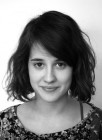 Flóra Barkóczi
Flóra Barkóczi
The study examines the forms, methods and characteristic examples of alternative art pedagogy, art education and knowledge transfer in Hungary in the 1960s-70s. Beyond an overview of institutional frameworks and possibilities it discusses the effects of alternative pedagogy on subsequent artistic practices.
Flóra Barkóczi is a Budapest-based art historian and curator. She studied art history at Eötvös Loránd University (Budapest) and at Humboldt University (Berlin). In 2015 she completed her MA on conceptual art and photography in Hungary in the 1970s. Her research fields are conceptual art, conceptual photography, avantgarde art and alternative art pedagogy in the 1960s and 1970s in Hungary. She has participated in several exhibitions and projects on the topic of art in Hungary in the 1960-70s, for example the exhibition Border Transgressions in the Museum at Backstage Gallery in 2013 (co-curated with Kristóf Nagy), Ornaments of Brotherhood at Collegium Hungaricum Berlin in 2014 (curated by Kata Krasznahorkai), Creativity & Visuality [1975-1977, 2015] at 2B Gallery in the framework of OFF Biennále Budapest in 2015 (curated by Judit Király, Réka Majsai and Annamária Szőke), and György Jovánovics – An Autobiography at Vaszary Gallery in 2016 (curated by József Mélyi).
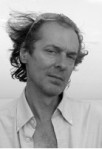 Géza Boros
Géza Boros
His research is aimed at the representation of Hungarian uprising in visual arts. In the wake of the crushed 1956 uprising, the ideas and memory of the uprising were considered the main taboos of the regime, and very few artists dared to touch the subject under the looming shadow of repression. Although the visual memory of the defeated uprising was kept alive through various creative tactics, most of the works in question were never exhibited publicly before the political transition of 1989.
 Lóránt Bódi
Lóránt Bódi
In his reserach he is focusing on the cultural role of Victor Vasarely during the Kádár era. It was Vasarely’s case that very visibly unified the Kádár regime’s effort to improve the country’s image via the representation of émigrés (large exhibitions in Budapest, founding museums, state commissions, publications, etc.) and to emphasize the openness and modern, progressive attitude of cultural politics via Vasarely’s abstract art.
Lóránt Bódi is a social scientist, PhD candidate at Atelier – Department of European Social Sciences and Historiography (Eötvös Loránd University, Budapest). He has studied at the Eötvös Loránd University and visited ZZF (Potsdam) and EHESS (Paris) as a researcher. He mainly focuses on politics of memory and formation of different historical narratives under the postwar period in Hungary and during the Kádár era (1956-1989).
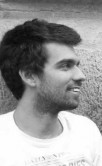 Gábor Dobó
Gábor Dobó
The chapter discusses how various notions of “Europe” were employed in 20th-century debates among Hungarian intellectuals to articulate the position of Hungarian art. The analysis maintains a double focus: it covers programs of self-definition by intellectuals centred on a vision of Europe or East-Central-Europe between World War I and the 1970s, while it offers substantial discussions of those who gave the most distinctive artistic responses to the question.
Gábor Dobó holds an MA in Literary History and is a PhD candidate at Eötvös Loránd University, Budapest. He has been a researcher at Kassák Museum since 2014. He has studied at universities in Budapest, Florence and Angers. In his research, he applies the methods of Periodical Studies to the magazines of the Hungarian avant-garde. His doctoral research focuses on the international network of Lajos Kassák’s magazine Dokumentum (Document) in 1926-1927. His work explores how an examination of Hungarian intellectual history contributes to the understanding of 20th-century Hungarian art: he studies the terms and theoretical frameworks used by specific authors, journals or groups to describe the relationship between the Hungarian avant-garde and the various concepts of East-Central European art.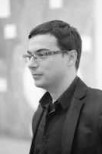 Dávid Fehér
Dávid Fehér
Fehér’s research examines the emergence of new forms of a medium-conscious form of figuration in Hungary from the late 1950s through the mid-1970s. He investigates the changing contexts and meanings of realism, and the appearance of a “discreetly oppositionary” painterly attitude. In the focus of his study will be such phenomena as surnaturalism, (quasi-)pop art and photorealism, and their contradictory position in cultural politics.
Dávid Fehér is Associate Curator at the Museum of Fine Arts, Budapest, in the Department of Art after 1800, and a PhD candidate in the Department of Art History at Eötvös Loránd University, Budapest. His research focuses on the art history of Hungary and Eastern Europe 1960-1980, especially the reception of photorealism, pop art and conceptual art. His work on photorealism and his survey of the transformations of Pop Art in Hungary and Eastern Europe have been published in the exhibition catalogues East of Eden. Photorealism: Versions of Reality (Ludwig Museum, Budapest) and International Pop (Walker Art Center, Minneapolis), respectively, as well as in major Hungarian journals. He also publishes regularly in the art press. Fehér curated the exhibition László Lakner: Seamstresses Listen to Hitler’s Speech at the Museum of Fine Arts, Budapest, and Imre Bak’s recent retrospective show at Art Gallery of Paks (Imre Bak: Timely Timelessness. The Layers of an Oeuvre / 1967-2015). He was the co-curator of 20th Century and Contemporary art, the most recent permanent exhibition of the Museum of Fine Arts. In 2011-2012, he received the Ernő Kállai Scholarship for art historians and art critics; he was a DAAD-fellow at the Freie Universität Berlin in 2013-2014. He is a board member of the Hungarian section of AICA. Maja and Reuben Fowkes
Maja and Reuben Fowkes
Maja and Reuben Fowkes are art historians and curators who work out of Budapest and London. They are founders of the Translocal Institute for Contemporary Art, a centre for transnational research into East European art and ecology based in Budapest that operates across the disciplinary boundaries of art history, contemporary art and ecological thought.
 Sándor Hornyik
Sándor Hornyik
His research is focusing on the post-Stalinist modernization of socialist realism in Hungary in the geopolitical context of the Eastern Bloc. He attempts to analyze the different aesthetical and political encounters between the official intentions of the „reform” and the artistic efforts intended to satisfy both soviet and western expectations of modernity.
Sándor Hornyik is an art historian and curator working for the Institute for Art History of the Research Center for Humanities of the Hungarian Academy of Sciences as a senior research fellow. His research concerns the history and theory of avant-garde and neo-avant-garde art as well as the theoretical issues of contemporary art and visual culture. He published a book on the neo-avant-garde reception of modern natural sciences (Avant-Garde Science?, Akadémiai Kiadó, Budapest, 2008), and another one on the intersections of visual studies and contemporary art (Aliens in a Sin City, L’Harmattan, Budapest, 2011). Between 2012 and 2014 he was the chief curator of MODEM (Museum of Modern Art Debrecen) where he curated several exhibitions dealing with the socialist and post-socialist visual cultures, and he made exhibitions in Maribor (Foreign Matter: Surrealism in the Attraction of Reality, National Liberation Museum, 2012) and Riga (Revolutionary Traditions, Riga Arts Space, 2011) as well.
 Emese Kürti
Emese KürtiAs the first events of the hungarian actionism, the Happenings from 1966 have their origin in poetry as medium, the forthcoming intermedia practices of the neo-avantgarde have the very basis of reflections on language. Starting from the concept of expanded poetry, the research focuses on the different manifestations of the actionism in our period.
Emese Kürti is an art historian and art critic. Between 2009 and 2015 she was working for the Ludwig Museum – Museum of Contemporary Art, Budapest. She is the author of several essays related to the avant-garde of the sixties and seventies and the contemporary art, for which she received the AICA Hungarian Section Award in 2013. She helds a PhD in Film, Media and Contemporary Culture at Eötvös Loránd University, Budapest. Her dissertation – Experimentalism, Avant-Garde and Social Networks in the Sixties. Dr. László Végh and his Circle (2015) – deals with the political and cultural background of the early sixties and suggests a new interpretation for the emerging neo-avant-garde based on experimental music. Her current research focuses on the experimental art of the sixties and seventies, and the poetical aspects of the actionism. From 2015 she is head of acb ResearchLab, founded for research, publication and curatorial presentation of the neo-avant-garde practices in Hungary. Its first publication: Bosch+Bosch, acb ResearchLab, Budapest, 2016.
 Mária Madár
Mária Madár
The research theme is to examine how the Western world has seen eastern-european art from the 1960s and 1970s through the examples of representative exhibitions curated in western countries from the late 1970’s onwards and how east-european art formed its self-image in the western context, affected by the “western gaze”.
Mária Madár, art historian and assistant museologist at the Museum of Fine Arts – Hungarian National Gallery, Budapest, in the Department of Contemporary Collection, and member of Working Group for Public Sociology “Helyzet” and Mérei Ferenc College for Advanced Studies in art and social sciences. She studied art history at Eötvös Loránd University (Budapest) and at Universiteit Leiden (Leiden). She is finishing her MA thesis on Béla Kondor, who was a prominent artist of 1960s and 1970s in Hungary. Her research interests includes the art history of Hungary and Eastern Europe 1950s-1970s and the reception of Eastern European art of these periods.
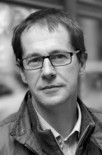 József Mélyi
József Mélyi
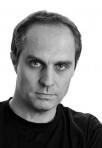 Péter Molnos
Péter Molnos
The history of Hungarian art collecting in the 60s and 70s. Analysis of the major collections and the social, market and political circumstances which are affected their creation.
Péter Molnos is an art historian specializing in 20th-century Hungarian art, the history of art collecting and the detection of forgery in painting. He has written monographs on the oeuvres of Vilmos Aba-Novák, Count Gyula Batthyány, Gyula Derkovits, Tivadar Csontváry Kosztka, Tibor Duray and Hugó Scheiber, on the collections of Rudolf Bedő and István Kövesi. He has published detailed studies on the Hungarian collectors of the French Impressionists, Vincent van Gogh and Paul Cézanne. He has curated a number of exhibitions at Kieselbach Gallery, the Museum of Fine Arts, Budapest, at MODEM in Debrecen, and at the Flóris Rómer Museum of Art and History in Győr.
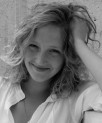 Júlia Perczel
Júlia Perczel
The research investigates how patterns of exercising power within the official cultural politics of the Socialist Regime disseminated and reproduced itself within group structures and personal strategies of the underground culture. The aim of the paper is to present patterns and strategies of networking within the cultural field of Hungary in the sixties and seventies in order to understand more deeply the context in which the art of the period arose.
Júlia Perczel is a social scientist, art historian and curator. Her main focus of research is the applicability of social science approaches and network methodology to the understanding of contemporary art phenomena. She completed her MAs in Social Science (Social and Organizational Psychology) and Art History at Eötvös Loránd University (Budapest) and at Tilburg University (Tilburg). Between 2013-2014 she conducted research investigating the patterns of networking and functional mechanism of the contemporary art field of Hungary. As a curator she gained professional experience at the Württembergischer Kunstverein Stuttgart and participated in the 1st OFF-Biennale Budapest. Currently, besides being part of the Kassák Museum Research Group, she is working on her PhD at Eötvös Loránd University, Budapest.
 Merse Pál Szeredi
Merse Pál Szeredi
The chapter discusses how various notions of “Europe” were employed in 20th-century debates among Hungarian intellectuals to articulate the position of Hungarian art. The analysis maintains a double focus: it covers programs of self-definition by intellectuals centred on a vision of Europe or East-Central-Europe between World War I and the 1970s, while it offers substantial discussions of those who gave the most distinctive artistic responses to the question.
Merse Pál Szeredi graduated at the Department of Art History of the Eötvös Loránd University in 2013; currently he is working on his PhD dissertation. His research focuses on the work of Lajos Kassák and his circles between 1919 and 1926 with special emphasis on the analysis of their international networks. He has been working as an intern at the Hungarian National Gallery and the Berlinische Galerie and has been researching in Berlin, Vienna and The Hague through several scholarships. He is working in the Kassák Museum since 2014 as an editor of the Online Avant-garde Database and as a researcher in the project reconsidering the avant-garde magazines of Kassák.
 Katalin Székely
Katalin SzékelyIn her research she examines the Hungarian neo-avant-garde art through the appearance of new image forms and media (photo, experimental film and video) from the sixties. Besides investigating the historical and theoretical background of this “medial turn” the research also examines how the new media - – by virtue of their experimental nature – gave the artists more room to manoeuvre in, both in institutional and art political terms, and how it helped artists from Hungary and the region to join the blood circulation of international art more freely.
Katalin Székely, art historian and curator of the Ludwig Museum – Museum of Contemporary Art between 2008 and 2013, is a PhD fellow of the Eötvös Loránd University Doctoral Program in Film-, Media and Contemporary Culture since 2013. Since 2014 she is member of the curatorial team of the OFF-Biennale Budapest. Since November 2015 she is Creative Program Officer of the Vera and Donald Blinken Open Society Archives, Budapest. Her field of research includes new media practices in neo-avant-garde in Hungary and Central- and Eastern Europe, and institutional critique in the CEE region from the early 60ies until today. Curator of several group exhibitions e.g. Site Inspection – The Museum on the Museum (with the Ludwig Museum’s curatorial collective) and The Freedom of Sound – John Cage behind the Iron Curtain as well as of numerous solo shows (e.g. Mladen Stilinović’s retrospective with Branka Štipančić; Allan Sekula’s Polonia and other Fables (with Karolina Lewandowska). Author and editor of numerous volumes including Paradise Lost – The First Roma Pavilion (Munich: Prestel Verlag, 2007 with Tímea Junghaus), Site Inspection (Ludwig Museum, 2012 with Hedvig Turai) and Bookmarks. Hungarian Neo-Avant-Garde and Post-Conceptual Art from the Late 1960s to the Present (Berlin: Distanz Verlag, 2015).  Dániel Véri
Dániel Véri
This chapter offers a new and complex narrative regarding Jewish identity and the memory of the Holocaust in 1960s and 1970s Hungarian art. It provides a thorough interpretation for a carefully selected body of works, analysing them within their respective cultural, social, historical, and political contexts. In terms of the material, both the manifestations of official memory and identity politics, as well as private, artistic memory and expressions of identity are taken into consideration.
Daniel Véri is an art historian and PhD candidate at Eötvös Loránd University (Budapest), where he will defend his dissertation on János Major, a major Jewish figure of 1960s–70s Hungarian art, in 2016. He holds MA degrees in Art History (Eötvös Loránd University, 2009) and History (Central European University, 2010). His research interests include 1960s–1970s Hungarian and Central European art, neo-avant-garde art, Holocaust and the arts, and the cultural history of the Tiszaeszlár blood libel. Recently, he has been the curator of two exhibitions: Holocaust and the Arts: Hungarian Stories (1945–1989) at the Hungarian Institute in Paris in 2014 and “Leading the Dead” – The World of János Major at the Hungarian University of Fine Arts in 2013 (accompanied by a Hungarian-English catalogue).
